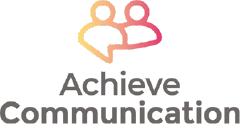Specialist speech and language therapist, Sophia Parinchy shows how mainstream practitioners really can make a difference as she shares three top tips for inclusion.

Sophia Parinchy – Speech and Language Therapist and Director of Achieve Communication – an independent speech and language therapy company offering consultancy, training and therapeutic support for paediatric clients and education settings across the UK.
Every child is unique and presents with an individual set of strengths and needs. Over time and with multi-agency support, staff in mainstream settings can gain a greater understanding of the provision that is required and adaptations that need to be made.
The key point here is ‘time’ – valuable time. Where identification and subsequent plans to meet those needs come late, it might be time that some children simply do not have.
There are however simple strategies with a proven track record of increased inclusion and engagement that can be implemented from the first day a child enters a mainstream setting.
Let’s take a look at Aisha’s story:
Aisha* is four years old, in a mainstream reception class with 30 other students supported by one teacher and one teaching assistant. Aisha has a diagnosis of Autism; she is nonverbal and is not yet following verbal instructions. The classroom team describe Aisha as being ‘in her own world’.
THE PROBLEM
With one teacher, one teaching assistant and no additional funding, there was no member of staff available to work with Aisha. The class team all worked hard to engage Aisha as and when they could, although this was often fleeting moments and brief opportunities. Staff were frustrated and disheartened.
THE SOLUTION
TOP TIP 1: Focus on one part of the routine – Identify one part of the daily routine when a consistent member of staff is available to support the child.
Instead of trying (and failing) to support Aisha throughout the day, the class team were encouraged to first identify one time during the daily routine that they could consistently provide Aisha with support from an adult. They recognised two adults were not needed during the group reading time, resulting in one adult being available every morning for 15 minutes to work with Aisha.
This protected time quickly became the catalyst for change. The consistency and predictability meant Aisha was able to quickly build rapport with staff while staff had the opportunity to observe, engage and understand how Aisha interacted with the world around her.
After one week, staff noticed Aisha spending more time within the classroom seeking out familiar adults. She also started to engage more, using touch to communicate by holding her teacher’s hand and sitting close by adults in the classroom.
ADDITIONAL GUIDANCE
Start small, aim for a short period of time which can be increased as the child becomes more independent and familiar with what is going to happen.

THE PROBLEM
Aisha’s class team found it difficult to identify what she was motivated by. She did not show any interest in the toys available in the classroom.
In the classroom Aisha was constantly on the move – walking, jumping and spinning. She would stop briefly, placing her face close to others to feel their eyelashes. She did show some fleeting interest the painting area but would put her hands in the paint rather than make marks on the paper.
THE SOLUTION
TOP TIP 2: Adapt activities to identify motivators – Observe the child during free flow play. Record what they naturally gravitate towards and use this information to identify motivators.
Looking closely again at observations three motivators were identified:
- Movement
- The texture of eyelashes
- Paint
It was now time to get creative and use these motivators to create opportunities for increased engagement. For Aisha this meant introducing objects and activities replicating the experiences Aisha would seek out during free flow play.
Movement: An exercise ball was introduced for Aisha to bounce on and roll over with support from an adult.
The texture of eyelashes: A box of feathers were used for Aisha to explore how they felt against her skin.
Paint: Aisha was encouraged to use her hands and feet to explore paint and make prints.
Aisha started to provide increased eye contact during these activities, she engaged for a longer period of time and also started to vocalise to show her excitement. Aisha would pull and take adults towards motivating items, initiating interaction. She also chose to explore paint independently during free flow play, using sponges to make marks on the paper.
ADDITIONAL GUIDANCE
A motivator can be anything the child will reach for when it is in sight, or prompt resistance when finished or taken away.

THE PROBLEM
Although Aisha was now happier and exploring an increased number of activities in the classroom, she continued to find transitions difficult. She would become very upset when transitioning to and from the playground.
THE SOLUTION
TOP TIP 3: If in doubt – make it visual! – Visuals often are the key to unlocking a child’s full potential. Visuals provide our children with the roadmap to navigate a confusing and ever-changing world.
Aisha was experiencing anxiety and it was important the class team understood why. As Aisha was not yet able to understand the verbal instructions used at playtime she was left asking – Where am I going? How long for? When will I be back?
To answer these questions, visuals were used:
Transitional object: An object the child enjoys is shown before the transition and then carried with them as they transition to the new location. For Aisha this was a water bottle filled with glitter.
Now and Next board: To show Aisha when she will be transitioning outside and also what motivating activity will follow when she returns to the classroom.
Timer: A large sand timer showing Aisha how long she will be spending outside, this was consistently available during playtime.
One member of staff implemented these visuals for 10 minutes before transitioning outside and 5 minutes when transitioning back into the classroom.
The transitional object was hailed a success, quickly providing Aisha with the visual prompt she needed to transition into the playground.
Although she did not immediately engage with the ‘Now and Next board’ after consistently using this alongside the sand timer Aisha began moving the symbols independently and using these symbols to choose her reward after playtime.
ADDITIONAL GUIDANCE
As with anything new, don’t expect results to be immediate! Perseverance will be your superpower!
Sand timer graphic
One last thing…
For Aisha, it was the determination and consistent approach of her classroom team that enabled her to access the world around her. She was now ready for multi-agency support to reach her full potential.
Teaching staff have the skills and the knowledge to achieve inclusion for these children, but consistency and belief are key. These strategies may have little impact on the first day. They may not even have any noticeable impact a week later. However, by being consistent with your practice you will see more engagement as you move closer to achieving inclusion within the mainstream classroom.
*Real name changed for confidentiality
Please login to view this content
Login